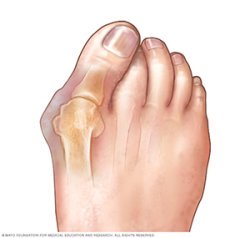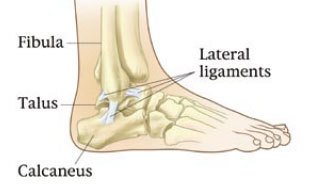Ankle Sprains
Among the most common orthopedic injuries are ankle sprains, which are not typically considered major although if they are not treated properly can lead to additional damage. The difference between twisting an ankle and spraining an ankle is the ankle will become swollen and the pain will continue. Of the estimated one million ankle injuries a year, 85% are
ankle sprains.
Ankle sprains are classified as high ankle, lateral ankle, medial ankle and low ankle. High ankle sprains are injuries to the ligaments connecting the tibia and fibula to the ankle joint. Medial ankle sprains are when the deltoid ligament is injured. Low ankle sprains are injuries to the ligaments that support the subtalar joint, which supports the the foot turning from side to side. High ankle sprains take longer to heal and in higher grade injuries require surgery. Low ankle sprains often heal with conservative management, but a subset of patients can develop chronic ankle instability and persitent pain(CAI). These patients require a procedure to stabilize the ankle.
Bunions
Bunions are a very common injury that is often experienced by adults, although women have a much higher rate than men. A bunion is a bony bump that develops on the top of the large toe at the point that it connects to the foot.
Bunions are typically caused by the continuous pressure over years of shoes that are too narrow which causes deformity to the toe, although when bunions develop at earlier years in life, heredity may be the cause. Once formed, bunions can also cause pain to the individual while walking or wearing tight shoes. Surgery to reduce the bunion is possible if the pain becomes too much for the patient to complete daily activities. Recent advances in surgical technology have allowed more reproducible results in deformity correction and minimally invasive techniques in select patients.
Ankle Arthritis
Ankle arthritis is the progressive degeneration of cartilage where the tibia and talus meet. Most ankle arthritis is posttraumatic in nature- meaning that it is most often caused by ankle sprains and fractures. Although rarer than hip or knee arthritis, ankle arthritis results in similar disability and pain. As a progressive condition, it will generally worsen with time and the process cannot be reversed. Treatment begins with conservative measures such as bracing, physical therapy, nonsteroidal anti-inflammatory medicines (NSAIDs), and selective injections with steroids or biologic adjuvants ( Platelet Rich Plasma (PRP) or Bone Marrow Aspirate Concentrate (BMAC; colloquially ‘stem cells'). In the early stages of the disease, arthroscopic procedures may be appropriate to slow the disease progression. Towards, the end-stage of the disease, joint sacrificing procedures such as an ankle fusion or total ankle can be considered. Significant advancements have been made in both procedures to improve patient outcomes.








